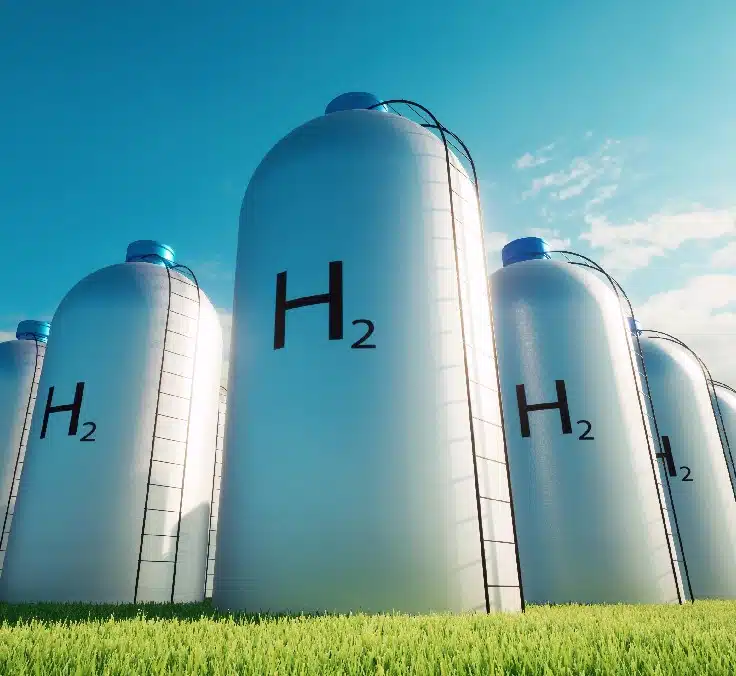SUSTAINABILITY| 10.05.2023
Biomethane – the future of clean energy?
Biomethane has recently become quite prominent in the media, with major headlines about its efficiency and sustainability, and clean energy and the debates it generates in the worlds of industry and politics. But do we really know how it is produced and how it can be useful to the general public?
Biomethane is a type of renewable gas produced from biodegradable organic matter, such as agricultural and food waste, manure, sewage sludge, energy crops, among others. Its production is based on the decomposition of these materials in an oxygen-free environment, producing biogas composed mainly of methane and carbon dioxide. The biogas is then purified to obtain biomethane, which is similar in composition to natural gas.
Thus, biomethane is a renewable and clean source of energy, since its production and use contribute to the fight against climate change. In addition, it can be used in the same processes and applications as natural gas, such as electricity generation, heating, cooking, transportation and other industrial uses.
What are the benefits of biomethane?
The use of biomethane has several benefits. The main one is the reduction of greenhouse gas emissions: producing biomethane eliminates the emission of methane, an extremely potent greenhouse gas, which arises from the decomposition of organic matter in landfills and other sources.
In addition, biomethane can be used as a substitute for fossil natural gas, thus reducing dependence on fossil fuels and helping to mitigate the effects of climate change.
Because it is produced from organic waste, it reduces the amount of waste sent to landfills, which can help reduce pollution.
Another advantage of biomethane is that it can be stored and used as a renewable energy source when there is not enough sun or wind to generate solar or wind power.
Finally, the implementation of this new renewable energy source can have an impact on the generation of jobs in agriculture, industry and technology, as well as in other sectors.
What uses can biomethane have?
Biomethane is a versatile renewable fuel that can be used in a variety of applications. Some of the most common uses are:
- Vehicles: biomethane can be used as a fuel for vehicles, either in compressed form (as natural gas for vehicles) or liquefied (as liquefied natural gas). Vehicles using biomethane produce less pollutant and greenhouse gas emissions than vehicles using gasoline or diesel.
- Electricity generation: biomethane can be used to generate electricity in power plants or cogeneration engines. Electricity generated from biomethane is a renewable energy source with a low environmental impact.
- Fed into the natural gas grid: biomethane can be injected into the existing natural gas grid and used for heating buildings, cooking and other natural gas consumption purposes.
- Industry: biomethane can be used as a heat source in industrial processes, replacing fossil fuels such as natural gas and oil.
How is biomethane produced?
Biomethane is produced from organic matter by a process called anaerobic digestion. This process involves the bacterial decomposition of organic matter in the absence of oxygen, which produces biogas. Biogas is composed mainly of methane and carbon dioxide and, through a process, it can be cleaned and purified to produce high quality biomethane.
The biomethane production process begins with the collection and sorting of organic waste, which can include food waste such as garbage, fruit peelings, leftovers, etc. It can also include agricultural waste and manure. These wastes are mixed and fed into an anaerobic digester, where they are decomposed through the action of specific bacteria that produce biogas as a by-product.
The biogas produced in the digester consists mainly of methane and carbon dioxide, along with small amounts of other gases. The biogas is purified to remove carbon dioxide and other contaminants, producing high quality biomethane with multiple applications as described above.
Is biomethane really sustainable?
The sustainability of biomethane depends largely on how it is produced and used. If produced from organic residues and agricultural wastes, which might otherwise have been discarded, and used instead of fossil fuels, it can be a renewable and sustainable energy source. In addition, biomethane produces fewer greenhouse gas emissions compared to fossil fuels, which can help reduce the impact of climate change.
It is important to take account of the reduction of emissions that is achieved thanks to the use of digestate, a waste produced during the methanization process. Using digestates as organic fertilizers for crops and soil improvement lowers the production cost of mineral fertilizers, which in turn eliminates the emissions associated with their production. In fact, a reduction of up to 13 kg CO2eq per ton of fertilizer can be achieved by replacing traditional fertilizers with this type of digestate.
In conclusion, biomethane is one of the best options for renewable and clean energy that will help achieve the Sustainable Development Goals set out in the 2030 Agenda.
RELATED ARTICLES:




